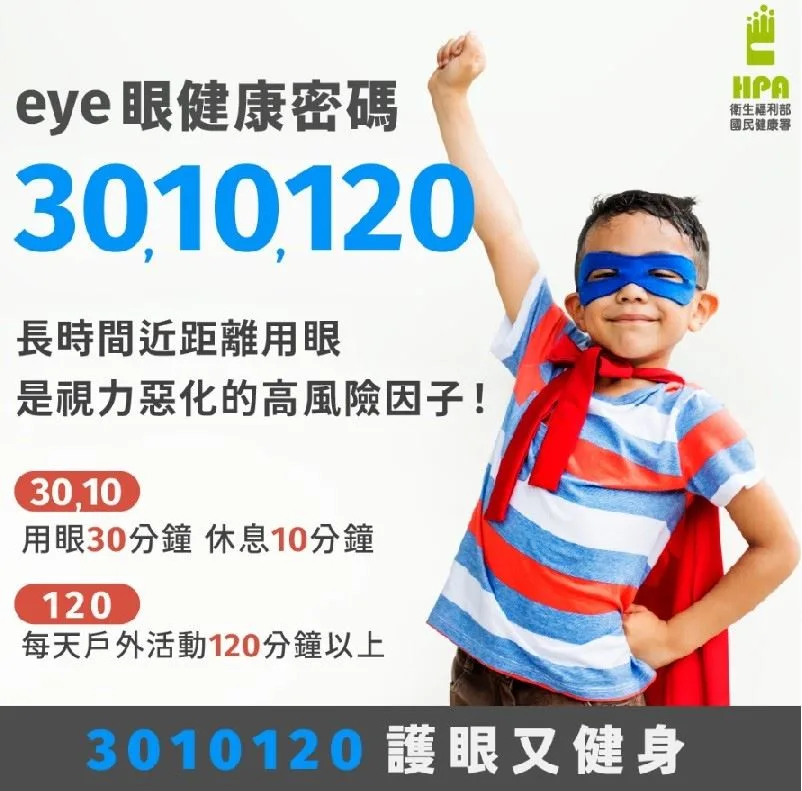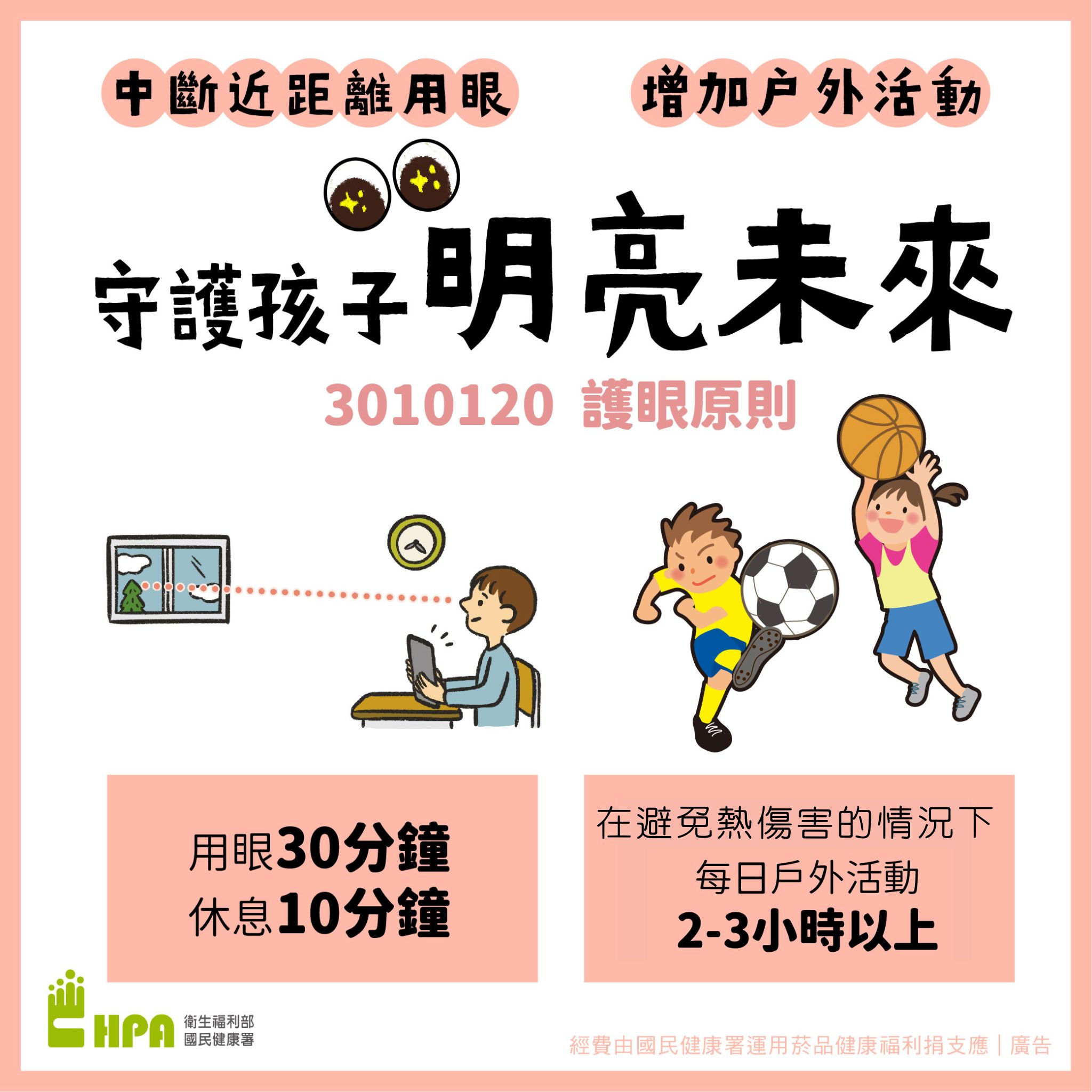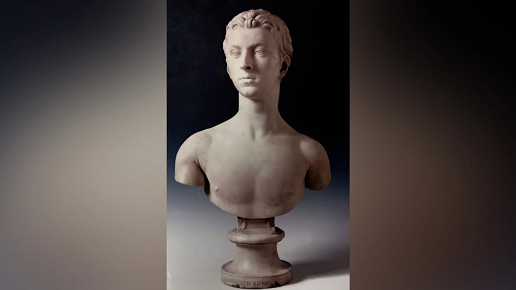With the changing times and learning patterns, along with the summer vacation period, children's usage of smartphones, tablets, and other 3C products has significantly increased. Prolonged close-up eye use without proper rest increases the risk of nearsightedness.
According to the 2017 "Children and Adolescents Vision Monitoring Survey" by the National Health Administration, the myopia rate for preschool children in the senior class is 9%, rising to 19.8% for first graders and 70.6% for sixth graders. National Health Administration Director Wu Zhao-jun urges parents to establish correct eye habits for children early and to follow the "3010120" eye protection principles: rest for 10 minutes after 30 minutes of eye use, and have 2-3 hours of outdoor activities daily to reduce the harm of myopia. Eye Health Code "3010120" (photo from the Facebook page of the National Health Agency)
Eye Health Code "3010120" (photo from the Facebook page of the National Health Agency)
Outdoor Activities Reduce Myopia Risk
The National Health Administration's 2013 vision health intervention plan for lower-grade elementary school students showed that 11 hours of outdoor activity per week can reduce the incidence of myopia by 55% and reduce the increase in myopia by 12 degrees per year. Additionally, more than 200 minutes of sunlight per week can reduce the risk of myopia in children by 49%. The study reported that regardless of whether children have myopia, those who participate in close-up activities (such as drawing, calligraphy, abacus, violin, piano, etc.) or practice for more than 4 hours a week have a 1.59 times chance of increasing their myopia by more than 50 degrees in a year. Outdoor activities are protective factors against myopia, while prolonged close-up eye use is a risk factor for myopia or increased myopia.
Natural light from sunlight increases the secretion of dopamine in the retina, inhibiting the elongation of the eye axis. Outdoor distant vision promotes relaxation of the eye muscles and adjustment of refraction, mitigating the negative impact of prolonged close-up eye use.
Annual Eye Exams to Monitor Hyperopia Reserve
Newborns have a physiological hyperopia of 200-300 degrees, which helps prevent myopia. However, excessive close-up eye use can rapidly deplete the hyperopia reserve, potentially leading to an earlier onset of myopia. Wu Zhao-jun urges parents to encourage children to engage in more outdoor activities during the summer while avoiding heat injuries. Additionally, remember to take children for regular eye exams at least once or twice a year to monitor their hyperopia reserve and protect their vision.







